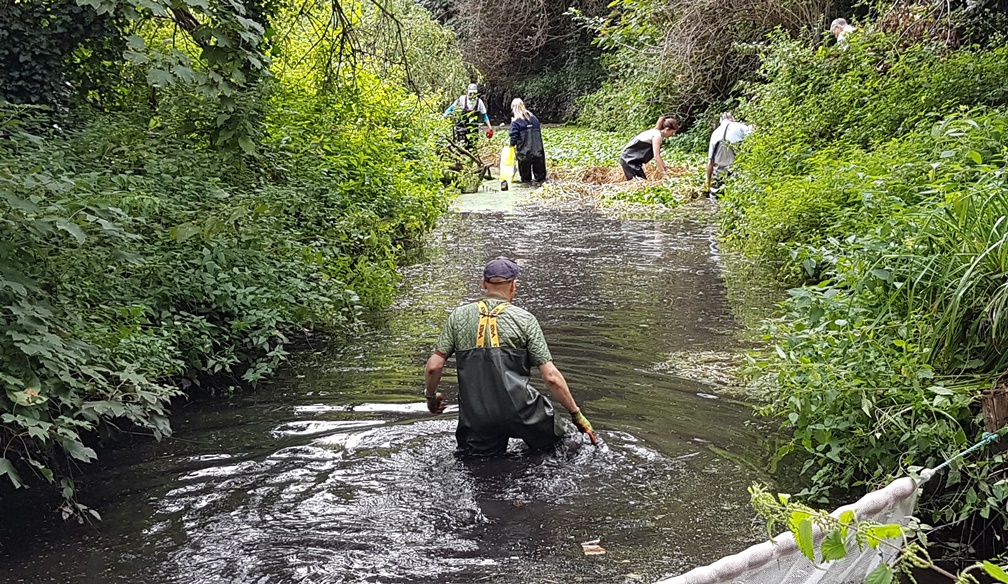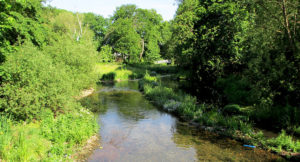Ian Fleming, with the Manchester Anglers fishing club, says of the River Ribble, “The club used to restock the river, buying fish from trout farms. But anglers encountering fewer fish began to suspect imported trout couldn’t cope with a high-gradient spate river. In 2006 the club voted to stop stocking the river and began rewilding.”
“Today beautiful wild fish thrive here, perfect golden-yellow-brown trout sporting black and red spots. We’ve also improved habitats, removing weirs and introducing fencing in partnership with the Ribble Trust. And riverbank trees that shield the water from sunlight, as the native trout prefer? We maintain these, too,” he continued.
In northwest England, the River Ribble is one of the longest rivers. The River Darwen joins the Ribble on Preston’s urban fringe. The upper Darwen starts as a moorland stream before it and its tributaries are culverted as they flow through the towns of Darwen and Blackburn. The Darwen provided power to the cotton and woollen mills of Blackburn and Darwen in the 18th and 19th Centuries.
These have left a legacy of many weirs throughout this river system, which create a barrier to movement for migratory fish such as salmon. As it flows from these urban centers, the River Darwen corridor is dominated by narrow valleys, open fields and woodland before it joins the Ribble near Preston. From Preston, the Ribble was diverted from its natural course to allow the development of Preston Dock, with the straight channel carrying the river out to the estuary.
In 1840, the river was trained by the construction of a low rubble wall, straightening and deepening the river allowing navigation to Preston Docks. The surrounding marshes and salt marsh areas have been extensively drained and fertilized, and by mid 16th Century much of the marshland had been converted to agricultural land.
The EU Water Framework Directive aims to restore the Ribble, and all other surface waters in Europe, up to “good ecological status”. Rewilding Britain aims much higher, hoping to restore fully-functioning native ecosystems.
In 1805, the River Wandle, which flows through southern London, England, was described as “the hardest worked river for its size in the world.” It was an urban sewer, poisoned by bleach and dyes from the 90 mills along its length. Engineers later straightened and canalized it–as they love to do–to speed water away from homes and businesses.
In an urban rewilding project, the Wandle Trust is restoring the river to its former glory as a beautiful chalk stream. Almost all the world’s chalk streams are found in England. They are rare and threatened habitats.
The Trust has been putting back features that harboured life in the river, which had been pulled out by overzealous engineers. It runs community cleanups every month, enlisting local people to remove the junk dumped in the water. It has been creating passages through the weirs to enable eels to migrate upstream. Children in local schools have been raising trout to restock the river.
The children’s involvement has encouraged them to see the Wandle as part of their landscape and to start playing in it once more. The project is rewilding children as well as the natural world. And it provides a valuable wildlife corridor right into the heart of the city.
Featured photo of River Wandle cleanup courtesy of the Wandle Trust.
See Rewilding Britain webpage about the Wandle.


